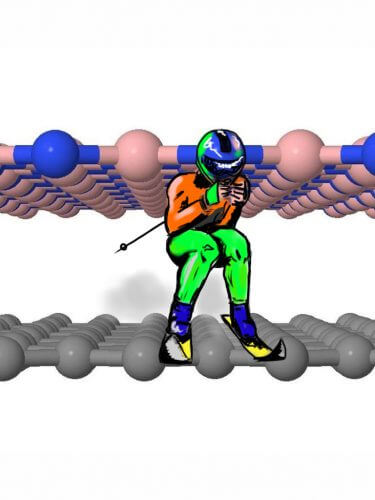The development of researchers at Tel Aviv University is expected to have countless applications in almost all areas of our lives: from car engines and computer drives to medical syringes and satellite bearings. Nature Materials

Prof. Michael Orbach and Prof. Oded Hod from the School of Chemistry of Tel Aviv University developed a super-pin system (superlubricity) which almost completely eliminates the friction between micrometric surfaces (micrometer = millionth of a meter/thousandth of a millimeter), thus preventing wear and saving a lot of energy. The research, which may have a significant impact on our lives in many areas, was carried out in collaboration with Prof. Ming Ma and Prof. Quanshui Zheng from Tsinghua University in Beijing, as part of the 'Xin' Center for Innovation of the two universities.
The article was published this week in the prestigious journal Nature Materials.
"Friction is a basic physical force that appears in any mechanical mechanism. "Friction is often essential for the operation of the system, but many times it also causes wear and energy loss," explains Prof. Auerbach. "There are estimates according to which about 30% of the energy supplied by fuel in vehicles is lost due to friction, and to this must be added the damage associated with erosion and wear and tear. For this reason, scientists all over the world are trying to develop systems that will significantly reduce the level of friction between bodies. In 1993, the term "super-pin" was coined by a group of Japanese researchers, who proved that a state of ultra-low friction is theoretically possible. However, to date, no actual superlubrication system has been implemented in mechanical mechanisms larger than a few nanometers (nanometer = billionth of a meter/millionth of a millimeter)."
The present study presents a breakthrough superlubrication mechanism, which reduces the friction between surfaces to almost zero, and may be suitable for a wide range of practical applications. "The research is based on theoretical work we carried out at Tel Aviv University, which predicted that the interface between a graphene surface (a two-dimensional sheet of carbon atoms) and a two-dimensional surface of hexagonal boron nitride (BN)-h, also known as 'white graphene') is expected to exhibit superposition independent of the relative directionality of the surfaces," says Prof. Hood. "The meaning is that if we observe two mechanical components moving on each other, one in graphite (multilayer of graphene) and the other in white graphite (multilayer of BN-h), we expect to get a highly effective superlubricator.” The reason for this lies in the crystalline structure of the two surfaces. The atoms of both materials are arranged in layers, with each layer resembling a honeycomb of hexagons. But the hexagons of white graphene are slightly larger than those of graphene. As a result, there is never a complete match between the two surfaces, and they slide over each other easily, in any direction. This is in contrast to two surfaces made of the same material, which have the same structure, and therefore lock inside each other (imagine two egg cartons placed on top of each other in perfect alignment...)
The colleagues of Prof. Hood and Prof. Auerbach at Tsinghua University performed a series of experiments that proved the theory in practice. The impressive results were obtained with square surfaces with a side length of 3 microns, and a contact area a million times larger than previous experiments (which were performed for nanoscale interfaces of graphene only). "Their measurements, which were supported by our calculations, showed ultra-low friction between the two surfaces, when they slide on each other at any angle," says Prof. Hood. "In fact, it is a pin bearing that reduces friction a thousand times compared to the level of mechanical friction that we all know from everyday life."
Prof. Auerbach concludes: "We foresee countless applications for the superlubrication technology we developed. Surfaces that are a few microns in size, like the ones we built, can already be used today for tiny devices, such as watch components and micro-electro-mechanical devices such as acceleration sensors, chemical sensors and piezoelectric devices. We believe that in the future, larger surfaces will also be developed, which will be installed in car engines, satellite bearings, and perhaps even in the living body. Such super-lubrication systems will save a tremendous amount of energy and prevent wear and tear in all types of mechanisms - starting with engines and medical syringes, and ending with the joints in our bodies."
*Explanation of a system on a pin: (https://en.wikipedia.org/wiki/Superlubricitysuperlubricity
